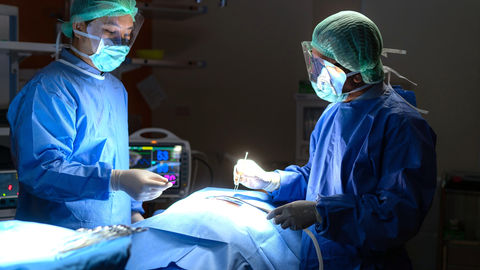
A few decades ago, the caesarean section was still considered a risky procedure and was only performed in emergencies. Thanks to medical advances, the risks are manageable these days. However, health problems cannot be ruled out.
The probability of dying in a cesarean section is almost three times higher than in vaginal births. However, at 1 in 57,000, the fatal outcome of a section birth is the absolute exception. Typical postoperative diseases cause more problems.
The cesarean section is a major operation
During a caesarean section, the pregnant woman’s abdomen is opened and the baby is lifted out of the uterus. What has become a routine procedure is nonetheless major abdominal surgery, with all the complications that come with it. There is a risk of thrombosis or embolism, and bleeding can continue for a long time. The wound can become inflamed, which impairs the healing process and necessitates medication. The scar can also grow and lead to complications.
Specific problems in caesarean section
Children born by caesarean section are more likely to have respiratory problems. This is because the amniotic fluid was not completely squeezed out of the lungs as in natural birth. Compared to women who give birth naturally, the mothers need medical care for much longer. On average, the women spend eight days in the maternity ward, longer in the case of infections. Due to the restricted movement possibilities and the pain, they cannot take care of their child independently during this time. For some women, this circumstance is accompanied by the disappointment of not having managed to give birth naturally. This often leads to depression. If the scar grows in the uterus, there may be problems with the next pregnancy. In addition, the probability increases.